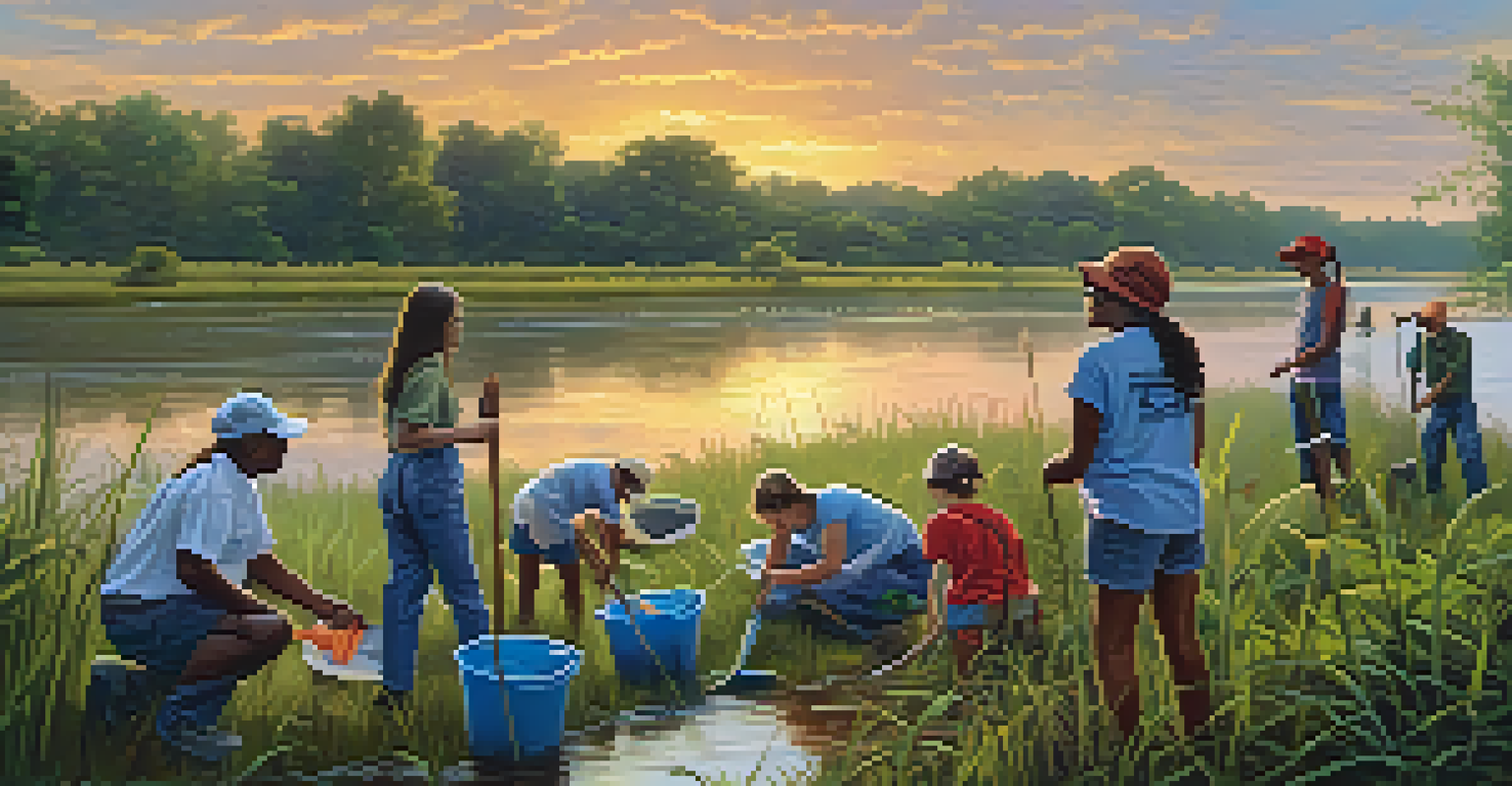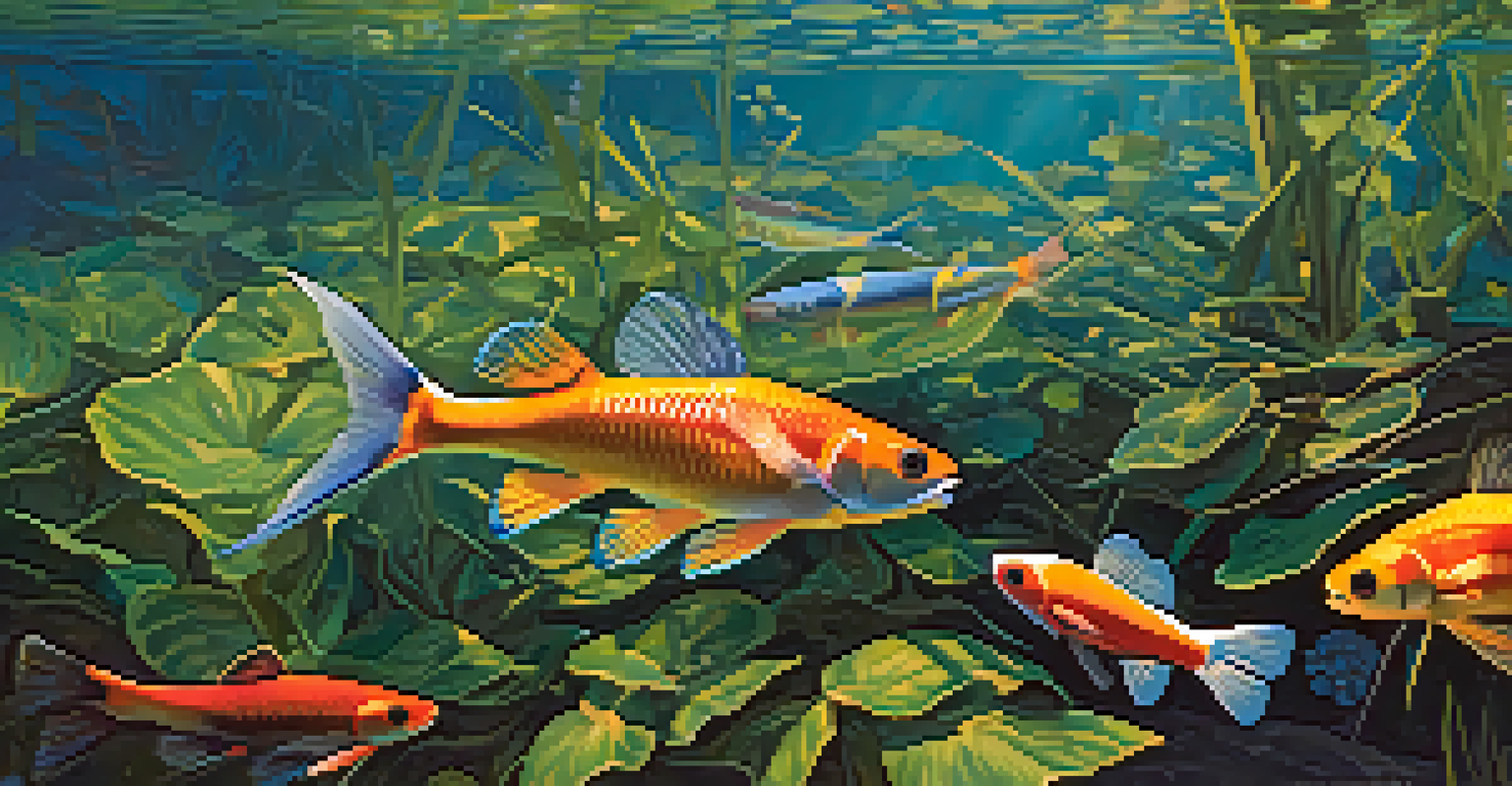The Role of Louisiana's Rivers in Wildlife Conservation

The Importance of Louisiana's River Ecosystems
Louisiana's rivers play a crucial role in maintaining diverse ecosystems. They provide essential habitats for countless species, from fish and birds to reptiles and amphibians. These waterways are not just conduits for water; they are lifelines that support the intricate web of life in and around them.
We won't have a society if we destroy the environment.
In addition to serving as habitats, the rivers also contribute to the overall health of the landscape. They help regulate the environment by filtering pollutants and providing nutrients to surrounding areas. This makes them vital for sustaining both wildlife and plant life, demonstrating the interconnectedness of nature.
Moreover, these ecosystems are dynamic, adapting to changes in climate and human activity. Understanding their importance is the first step in ensuring their protection and the conservation of the wildlife that depends on them.
Key Species Dependent on Louisiana's Rivers
Louisiana's rivers are home to a plethora of species that are uniquely adapted to these environments. For instance, the American alligator thrives in the swamps and bayous fed by these rivers, playing a significant role in maintaining the ecological balance. Meanwhile, migratory birds use the waterways as vital stopovers during their long journeys, showcasing the rivers' importance in biodiversity.

Additionally, fish species like the Louisiana black bear are reliant on the health of river systems for their survival. These animals depend on clean water and abundant food sources, which are directly affected by the condition of the rivers. This highlights the necessity of preserving these habitats to protect the wildlife that calls them home.
Vital Role of River Ecosystems
Louisiana's rivers are essential habitats that support a diverse range of wildlife and contribute to the overall health of the landscape.
Overall, the survival of these key species is intertwined with the health of Louisiana's rivers, emphasizing the need for conservation efforts that consider the entire ecosystem.
Threats to River Ecosystems and Wildlife
Despite their importance, Louisiana's rivers face numerous threats that jeopardize wildlife conservation. Pollution from industrial runoff, agricultural practices, and urban development can severely impact water quality. When contaminants enter the rivers, they not only affect aquatic life but also disrupt the entire food chain.
The greatest threat to our planet is the belief that someone else will save it.
Moreover, habitat destruction due to damming and water diversion alters natural flow patterns, affecting species that rely on specific water levels and conditions. This disruption can lead to declines in fish populations and other wildlife, further complicating conservation efforts. The balance of these delicate ecosystems hangs in the balance as human activity continues to encroach.
Recognizing these threats is essential for implementing effective conservation strategies. By understanding the impact of our actions, we can work together to protect these vital waterways and the wildlife they support.
Community Involvement in Conservation Efforts
Local communities play a pivotal role in the conservation of Louisiana's rivers and their wildlife. Engaging residents in clean-up efforts, educational programs, and wildlife monitoring initiatives fosters a sense of ownership and responsibility. When communities are actively involved, they become advocates for the rivers, ensuring that their voices are heard in conservation discussions.
In addition, community-led initiatives often bring together diverse stakeholders, including schools, nonprofits, and government agencies. This collaboration can amplify efforts to protect river ecosystems and create a more significant impact. By pooling resources and knowledge, communities can address the challenges facing their local rivers more effectively.
Threats to River Health and Wildlife
Pollution and habitat destruction pose significant threats to Louisiana's river ecosystems, jeopardizing the survival of numerous species.
Ultimately, grassroots movements can lead to meaningful change and inspire others to take action. When people come together to protect their natural resources, they not only help wildlife but also strengthen their connection to nature.
The Role of Education in Wildlife Conservation
Education is a powerful tool in wildlife conservation, particularly concerning Louisiana's rivers. By raising awareness about the importance of these ecosystems, individuals can better understand the impact of their actions on the environment. Schools and educational programs that focus on local wildlife and river systems can instill a sense of stewardship in younger generations.
Moreover, educational initiatives can provide practical knowledge about sustainable practices, such as reducing pollution and conserving water. When people are equipped with the right information, they are more likely to engage in behaviors that protect wildlife and their habitats. This proactive approach is essential for long-term conservation success.
As communities prioritize education, they empower individuals to become informed advocates for their local ecosystems. Knowledge can spark passion and action, leading to more effective conservation efforts and a healthier environment for wildlife.
Government Policies Supporting River Conservation
Government policies play a vital role in safeguarding Louisiana's rivers and the wildlife they support. Regulations aimed at reducing pollution, protecting wetlands, and managing water resources can significantly impact conservation efforts. When enforced effectively, these policies help to maintain the health of river ecosystems and ensure the survival of vulnerable species.
Additionally, funding for conservation projects, research, and habitat restoration is crucial for addressing the challenges faced by Louisiana's rivers. Programs that allocate resources to local organizations and initiatives can facilitate on-the-ground efforts to protect wildlife. This financial support is often the backbone of successful conservation strategies.
Community Action Drives Conservation
Engaging local communities in conservation initiatives fosters a sense of ownership and responsibility, leading to more effective protection of river ecosystems.
By working in tandem with local communities, government entities can create comprehensive plans that address both ecological and social needs. These partnerships can lead to innovative solutions that benefit wildlife and enhance the quality of life for residents.
The Future of Louisiana's Rivers and Wildlife Conservation
Looking ahead, the future of Louisiana's rivers and their wildlife is contingent on our collective actions today. Climate change, habitat loss, and pollution continue to pose significant challenges, but there is hope. By fostering collaboration between communities, governments, and conservation organizations, we can create a more sustainable future for these vital ecosystems.
Innovative conservation strategies, such as restoring natural habitats and promoting sustainable agriculture, can help mitigate some of these threats. Emphasizing the importance of biodiversity can also guide efforts to protect endangered species and their habitats. The resilience of these ecosystems depends on our commitment to preserving them.

Ultimately, the future of Louisiana's rivers is interconnected with the health of our wildlife and the well-being of our communities. By prioritizing conservation efforts, we can ensure that these precious waterways continue to thrive for generations to come.